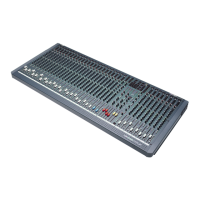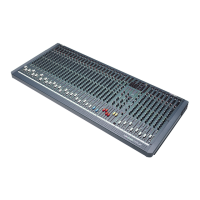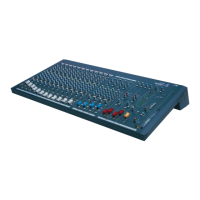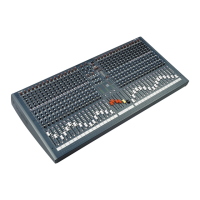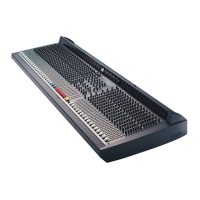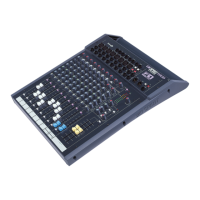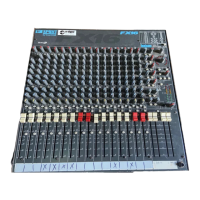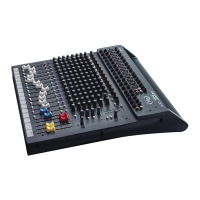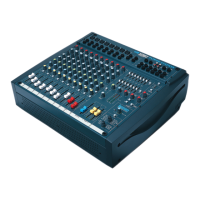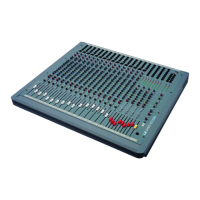
Do you have a question about the SoundCraft Spirit Live 4 and is the answer not in the manual?
| Aux Sends | 6 |
|---|---|
| Main Outputs | XLR |
| Faders | 100mm |
| Mic Inputs | 16 |
| Line Inputs | 4 |
| EQ Bands | 4-band |
| Buses | 4 |
| Phantom Power | +48V |
| Returns | 4 stereo |
| Number of Channels | 24 |
Explains faders for level control and how inputs handle mic/line signals.
Details the equalizer, auxiliary sends for routing, and pan for stereo positioning.
Covers the master section for overall control and PFL for signal monitoring.
Explains insert points for external processing and the meaning of pre/post signal routing.
Details headroom as signal reserve and the effects of clipping distortion.
Provides wiring guidelines to minimize noise when using unbalanced connections.
Explains the importance of proper grounding and shielding for optimal performance.
Encourages learning the block diagram for system structure and signal flow.
Emphasizes understanding each component's role to identify faults.
Outlines a logical process for tracking down problems by elimination.
Details the microphone input, direct output, line input, insert points, line select, and gain control.
Explains the stereo input section comprising pairs of inputs for Left/Right signals.
Describes the -10 switch for matching different signal levels from Hi-Fi or semi-pro sources.
Details the 2-band shelving EQ section for stereo inputs.
Describes the mono return input for each group, used for sub-mixes or effects.
Explains insert points for external processing on group outputs.
Explains how the pan control positions signals routed to the mix L/R busses.
Describes the PFL function for monitoring group signals.
Details the long-throw faders for level control of each group.
Describes the group outputs driven by ground compensated amplifiers.
Details the DC power socket and required power supplies for different frame sizes.
Explains the mono output as a sum of Mix L/R for centre speaker feeds.
Describes the Mix L&R outputs using standard male XLR-3 connectors.
Explains the 12-segment bargraph meters for visual monitoring of output levels.
Guides users through the initial setup process for the mixer.
Provides advice on optimal microphone placement for sound reinforcement.
Illustrates a basic setup for public address with stereo output.
Shows a configuration using Group 1 for an additional centre speaker.
Demonstrates feeding loudspeakers in mono only, with submixing from another mixer.
Illustrates a setup for 2-track or basic multitrack recording with stereo output.
Details connecting the mixer to multitrack tape machines for recording and mixdown.
Provides guidelines on avoiding damage from heat, cold, moisture, and spills.
Explains how to disable phantom power by removing a link on the input PCB.
Details how to reconfigure Aux 2 from PRE FADE to POST FADE by repositioning a link.
Details noise levels for Mix, Aux, and Group outputs, and Equivalent Input Noise.
Lists crosstalk isolation specifications for various channel and routing functions.
Provides THD distortion figures and input/output impedance values.
Details maximum input/output levels and bargraph meter accuracy.

